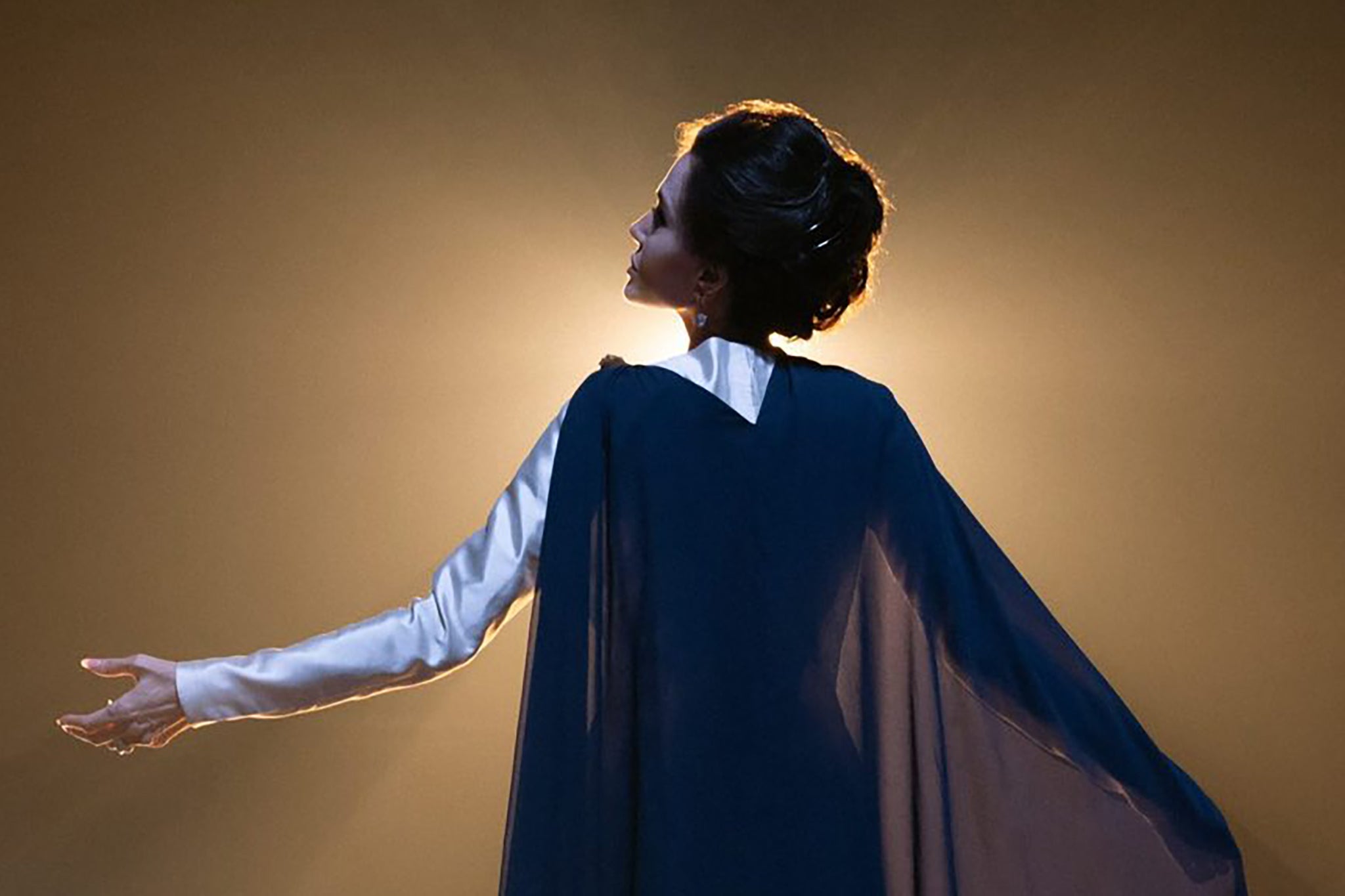Maria, Venice review: Angelina Jolie gives a career-defining performance as a haunted opera diva
Chilean director Pablo Larraín concludes his thematic trilogy of 20th century biopics of famous women – after ‘Jackie’ and ‘Spencer’ – with this soft, restrained drama
Your support helps us to tell the story
This election is still a dead heat, according to most polls. In a fight with such wafer-thin margins, we need reporters on the ground talking to the people Trump and Harris are courting. Your support allows us to keep sending journalists to the story.
The Independent is trusted by 27 million Americans from across the entire political spectrum every month. Unlike many other quality news outlets, we choose not to lock you out of our reporting and analysis with paywalls. But quality journalism must still be paid for.
Help us keep bring these critical stories to light. Your support makes all the difference.
Grief in Maria has a different aftertaste. It’s deeper, less acrid. The film closes out Chilean director Pablo Larraín’s thematic trilogy of feminine horrors, portraits of the rubbled dreams of women who walked the 20th century’s most privileged halls. Jackie’s monstrous climax splattered the blood of President Kennedy across his wife’s pale pink suit, as worn by Natalie Portman; Spencer sent Kristen Stewart’s Diana stumbling down the halls of Sandringham estate, nauseous, her body possessed by the foul, inescapable stench of duty.
Here, violence and possession make way for the haunted. Maria is the softer, more restrained film – less immediately striking, perhaps, but still deeply emotive. It invokes the last days of Maria Callas, “La Divina” of opera, as played by Angelina Jolie. She was striking in her beauty and formidable on stage, able to command her passions like a battalion, with a voice that seemed to swell up from somewhere deep in the earth.
Her career was also relatively short-lived. In the Fifties, she was one of the world’s most lauded women, a pivotal figure in the revitalisation of the bel canto operas of the 19th century by Bellini, Donizetti and Rossini, a kind of song deemed too florid and too romantic at the time by serious academics. By the end of the decade, however, she had abruptly entered semi-retirement. Her voice had become irreversibly damaged. She died in 1977, the public arguably more interested in her futile romance with shipping magnate Aristotle Onassis – who married Jackie Kennedy instead – than in the legacy of her talent.
Jackie and Spencer took their subjects and collided them with misfortune. Maria nestles into the hollow that comes after. It lives in the space left behind by the preening and arrogant yet confident Onassis (Haluk Bilginer), and by Callas’s mother, who sewed into her daughter a lifetime of self-hatred and insecurity. But Callas, too often, has been painted as the woman abandoned by her man and left to wither. Larraín rejects this hypothesis, and focuses instead on the relationship with the self, as Callas strives to reclaim her narrative – not for the benefit of the world outside, but for her own peace.
Larraín uses what I imagine will be a somewhat divisive framework: hallucinations of a television interviewer named Mandrax (Kodi Smit-McPhee), after the pills she’s become addicted to, whose questions are supposed to prepare Callas for an autobiography she never actually writes. It’s a little odd, reminiscent of Diana’s confrontation with the spirit of Anne Boleyn in Spencer. Still, Larraín has a way to make what feels absurd on paper read as poignant on screen. Edward Lachman’s cinematography allows the transitions between reality and unreality, colour and black and white, to melt into one beautiful, sad dream.
Stewart and Portman certainly brought a part of themselves to their respective roles. But Jolie and Callas feel the most like twinned spirits. It’s a career-defining bit of synchronicity, bolstered by one of Jolie’s very best performances. Her work has always been about that immaculate sense of control over posture and tone – it turned manipulative when she played a sociopath in Girl, Interrupted, and unravelled with careful intent in 1998’s Gia, where she played the troubled supermodel Gia Carangi. Callas, in order to wrench forth the desperation of Lady Macbeth, Medea, or Madama Butterfly’s Cio-Cio San, was deliberate in every breath and syllable, too.

Jolie’s Callas is queenly, accentuated by Massimo Cantini Parrini’s enviable wardrobe of silk scarves, chunky gold jewellery, leather gloves, and bug-eyed glasses. But her humanity is also potent and fragile, best found in her relationship with her domestic workers (played by Pierfrancesco Favino and La Chimera’s Alba Rohrwacher) – it’s tender, but none of the three is unconscious of the power dynamic between them.
The actor’s singing voice is convincingly used, specifically for the sequences where Callas is not in her prime (but still far above the average mortal), blended in with original recordings that play in their full resplendence. Music remains at the heart of Larraín’s film. At a climactic moment, Callas meets with her sister Yakinthi (Valeria Golino), who begs her to finally shut the door on their tumultuous childhood. “[But] it’s the only way the music gets in,” Callas confesses. Maria is a tragedy, but not because of one of life’s piteous events. Instead it’s the tragedy of a woman’s failure to heal her wounds with her art.
Dir: Pablo Larraín. Starring: Angelina Jolie, Valeria Golino, Haluk Bilginer, Alba Rohrwacher, Pierfrancesco Favino, Kodi Smit-McPhee, Alessandro Bressanello. 124 mins
‘Maria’ premiered at the Venice Film Festival and is awaiting UK release

Join our commenting forum
Join thought-provoking conversations, follow other Independent readers and see their replies
Comments